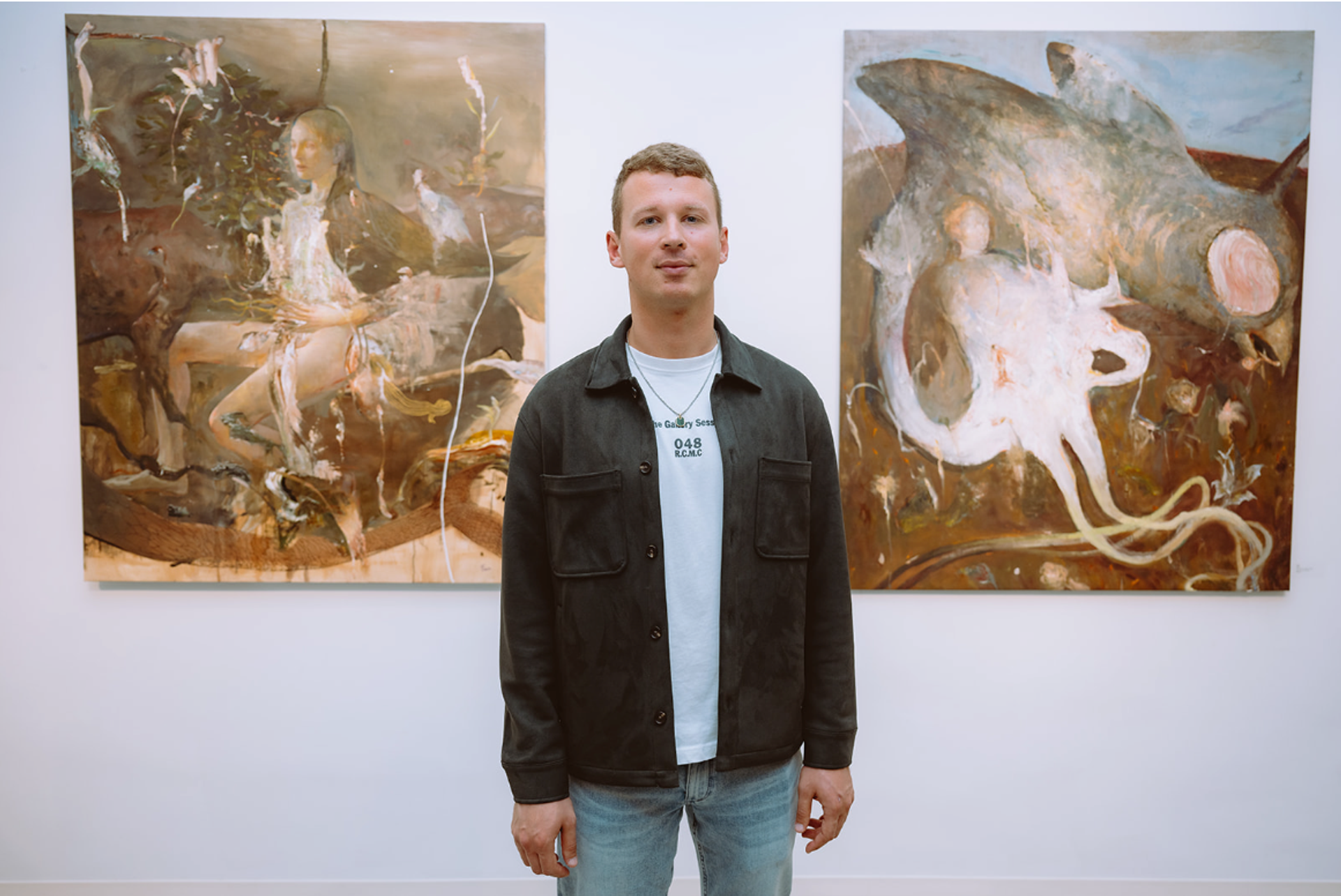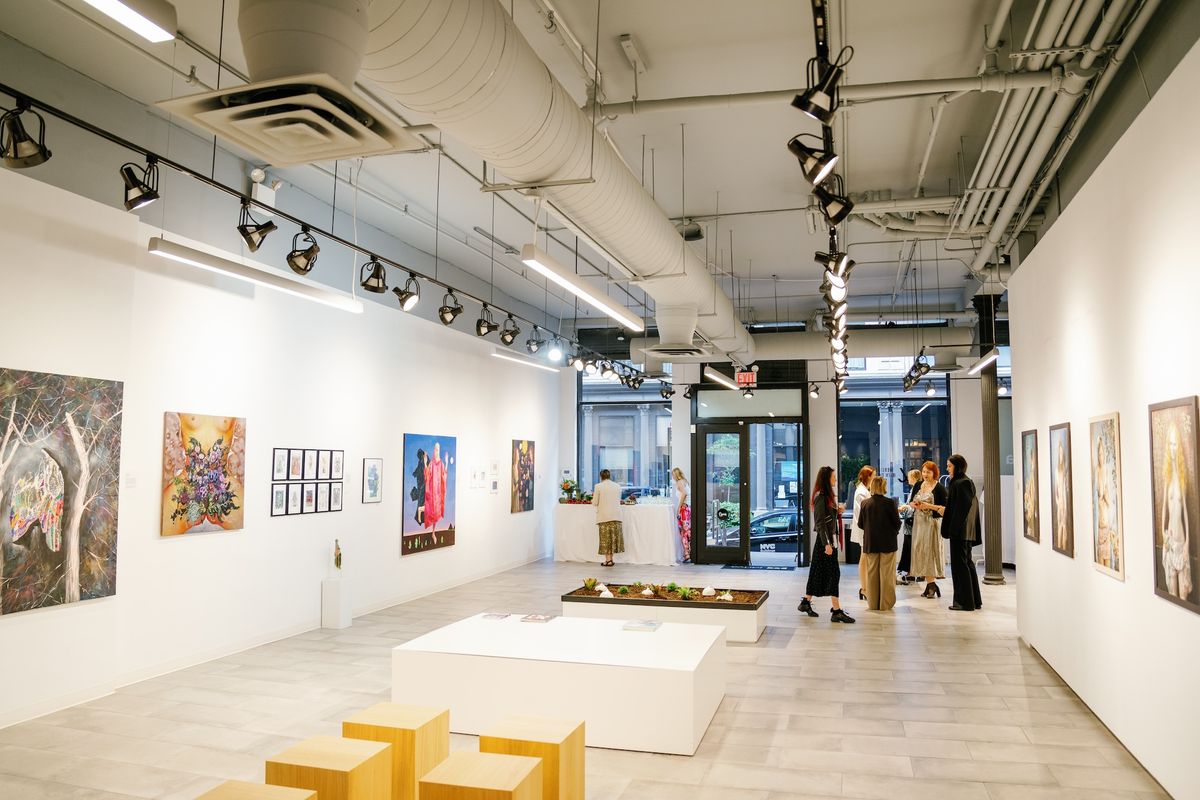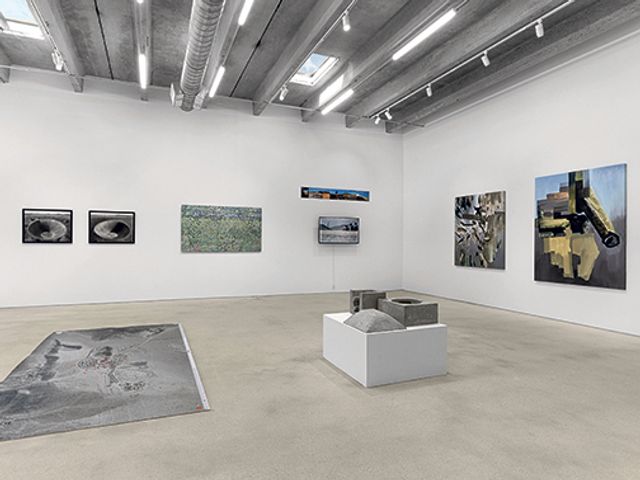Although Artem Yalanskiy’s expertise is in sports management and mixed martial arts, he opened a gallery in New York’s Tribeca neighbourhood last year to promote Ukrainian contemporary art.
Mriya, a 5,000-sq.-ft space on Reade Street, launched with a $600,000 investment from Yalanskiy and like-minded friends with roots in Zaporizhzhia—a Ukrainian region currently under Russian siege. Yalanskiy bills it as New York City’s first Ukrainian art gallery. Mriya’s name, “dream” or “inspiration” in Ukrainian, symbolically aludes to a strategic cargo plane that was at the centre of a battle over Kyiv’s Hostomel Airport shortly after the launch of Russia’s invasion of Ukraine in February 2022.
Initially, Yalanskiy thought cannabis might be a good way of promoting the gallery among young potential art buyers. But like many New York venues, Mriya had trouble securing a cannabis licence, so it now deals solely in art and art-adjacent merchandise—made by Ukrainian designers, produced under Russian bombardment and reflecting themes of Ukraine’s independence and resilience.
Despite tangled logistics, the gallery sources most of its works directly from Ukraine. Some of these address the invasion directly, while others magnify the power and beauty of art to overcome the desolation of war. The gallery’s website is currently offering Yurii Vatkin’s Blue Courage for $4,500, as well as R by Mikhail Pokutnii ($800)—a painting of a nude woman holding automatic weapons. Dasha S. Kandinsky’s series of colourful grenades with pulls that read “God Loves You”, “God Bless”, “In God We Trust” and “Good God” are priced upon request.
“We started thinking about how we can promote the culture,” Yalanskiy tells The Art Newspaper. “I don’t want Ukrainians to be associated just with the war, with sympathy. The idea was that we select the best artists. We work with them. We bring them to New York. We showcase their work. People that come here, people that purchase art in our gallery—they purchase not because it’s Ukrainians and they need it. They purchase because they see value in it. They see that it’s actually undervalued if you look at the market. Some of the works that we’re selling here, I’m very confident that in three years they will double in price.”
Between 5% and 10% of proceeds from the gallery’s sales go to Peace for the Future, founded by one of Yalanskiy’s former classmates in Zaporizhzhia to fund humanitarian and military aid to Ukraine. Mriya has also partnered with the charity Razom for Ukraine.

Artem Yalanskiy at Oleksii Shcherbak's exhibition Victims of Grenouille Photo: Dinara Khairova
The gallery often works with Rukh Art Hub, founded in 2022 by the Kharkiv natives Mariia Manuilenko and Olga Severina to promote Ukrainian art in the US. Severina is a graphic designer and lecturer based in Los Angeles since 2010, while Manuilenko works as an art historian and culture manager who sold work by Ukrainian artists in the US even before the Russian invasion. The pair have organised four shows at Mriya so far this year.
Funds from their show Shero (16-22 February), of works by nearly 30 women artists, were directed to women’s health programmes in Ukraine. Art made by children who study at Kharkiv’s Aza Nizi Maza studio—which continues operating in a metro bomb shelter—was shown concurrently with the exhibition The Time Capsule—A Golden Record (24 February-3 March). Victims of Grenouille (5-29 April) showcased the emerging artist Oleksii Shcherbak. And Merging with the Garden (25 May-5 June) featured 20 women artists examining the theme of rebirth, including Kateryna Reznichenko and Polina Kuznetsova, one of Rukh’s curators.
Rukh is also organising Mriya’s programme for the Volta art fair’s Ukrainian Pavilion in New York in September, as well as its first show in the Hamptons this month, promoted with sleek Instagram teasers.
Severina describes being paralysed with shock in the first months after the Russian invasion, until she returned her focus to promoting Ukrainian culture. She says of the war: “It makes us stronger, but emotionally, it’s like a deep black hole.” She adds that in New York, Rukh and Mriya have “the right vibe, the right location, the right balance of a multicultural environment” for their mission.
Manuilenko says that remembering “our soldiers at the border” and “how hard it is to fight for our freedom” inspires cultural workers to persevere.
The Kyiv-based artist Valeriya Tarasenko, whose work was featured in Merging with the Garden and who was able to extend her artist residency in Chicago due to the war, describes her profound homesickness on the one hand and turning her current existence into art on the other. “It’s a terrible experience,” she says. “But it’s mine, and I accept it.”



